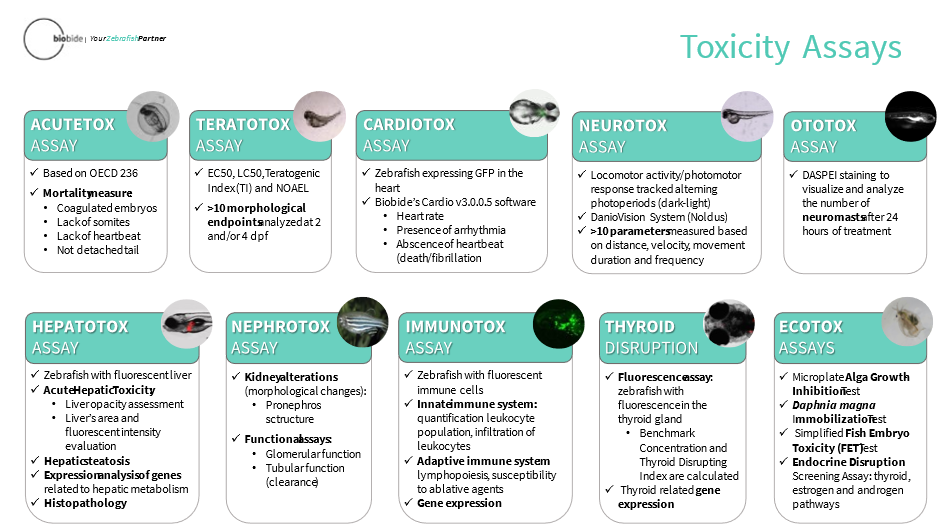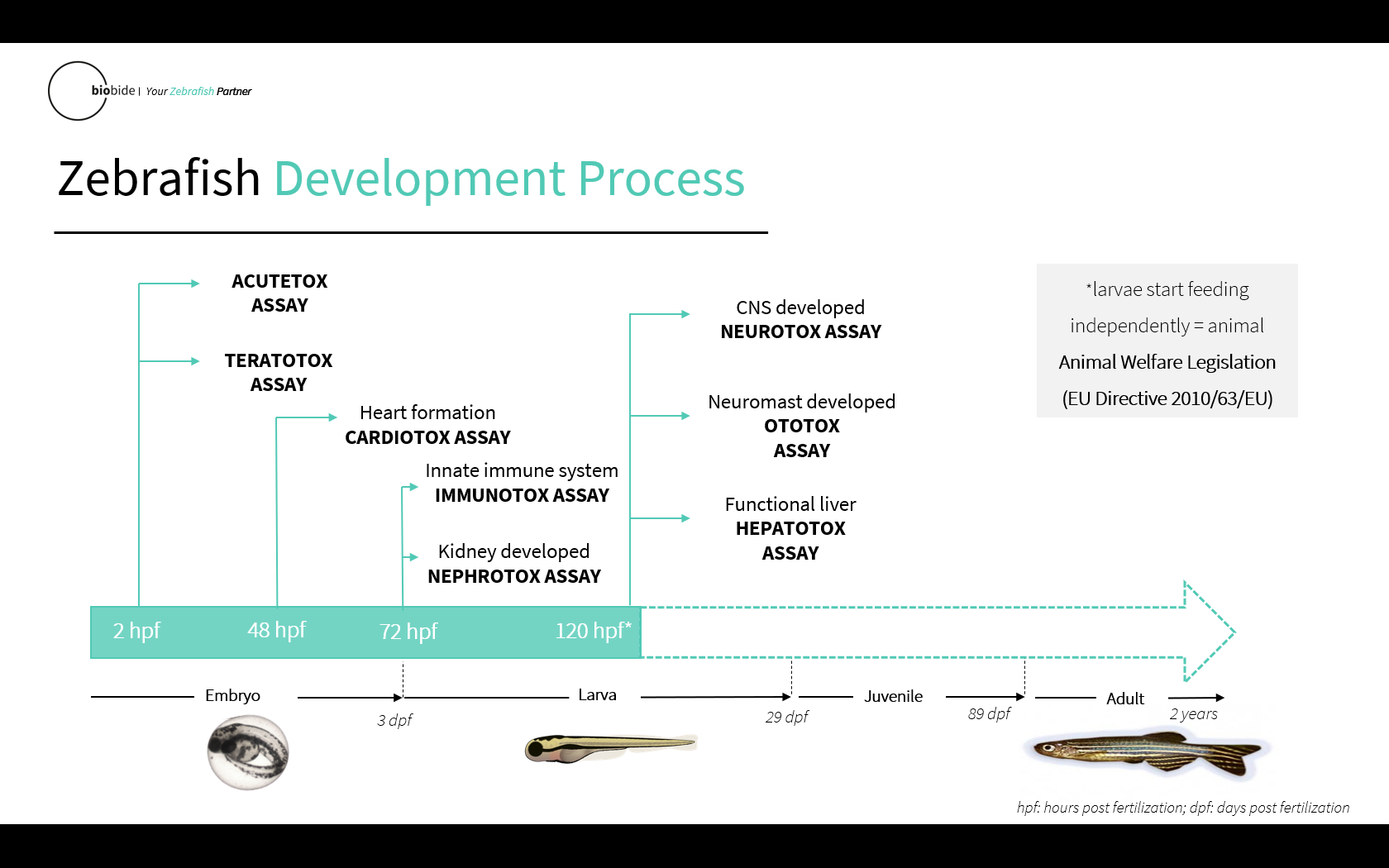Shop
Zebrafish Organ Specific Toxicity Assays: Ototox Assay

Zebrafish models are gaining recognition in their applications within several fields, such as developmental biology and toxicology. The advantages of the zebrafish model are mainly its low cost and ease of maintenance and breeding. Moreover, the zebrafish is ideal for research purposes due to its small size, ease of handling and transparency.
We have developed a method to detect the capability of a compound to induce ototoxicity as part of safety pharmacology studies. Although the detailed structure of the inner ear varies among vertebrates, all species rely on hair cells to detect both vestibular and auditory sensory stimulation. In addition to the inner ear, zebrafish have superficial mechano-sensory organs called neuromasts, present on the lateral line along the head and body.
Each neuromast contains a ring of supporting cells which surround a central cluster of sensory hair cells that are similar in structure and function to the inner ear hair cells in mammals.
Similar to the processes involved in degeneration of hair cells in the organ of Corti in mammals, neuromast hair cells in zebrafish have been shown to undergo programmed cell death during normal turnover and after injury with known ototoxic drugs, validating the use of this organism as a tool for ototoxicity screening.

